Disclosure: This article contains affiliate links. We may earn a commission from purchases at no extra cost to you, which helps our travel content.
The morning mist clung to the emerald canopy as I stood at the edge of the Mayombe Forest, my drone hovering above like a curious hummingbird capturing the vastness of this verdant wilderness. After decades of exploring well-trodden paths from Quebec's forests to New Zealand's mountains, I found myself drawn to this lesser-known corner of the Republic of Congo. Dolisie—a city cradled by mountains and wrapped in forest—beckoned with promises of untamed adventure and cultural treasures few Western travelers ever witness. As an educator turned travel photographer, I've always believed that the most profound learning happens when we step beyond our comfort zones. Quel émerveillement! What wonder awaited in this green heart of Africa! With my trusty hiking boots laced tight and camera batteries fully charged, I embarked on a two-week journey that would challenge my experienced legs while nourishing my curious soul. This wasn't just another trek—it was an immersion into one of our planet's most biodiverse yet vulnerable ecosystems.
Preparing for Congo's Green Wilderness
When planning an adventure to Dolisie and the Mayombe Forest, preparation is not just recommended—it's essential. Having trekked through remote regions across four continents, I can attest that the Congo presents unique challenges that demand respect and forethought.
First, documentation: Beyond your passport and standard visas, you'll need special permits for forest access and photography. I arranged these through a reputable Congolese tour operator three months in advance—a process that tested my patience but proved worthwhile. Health preparations are non-negotiable; yellow fever vaccination is mandatory, while typhoid, hepatitis, and malaria prophylaxis are strongly advised. My local travel clinic provided comprehensive guidance tailored to the region.
Equipment considerations for the Mayombe are distinct from other tropical forests I've explored. The combination of intense humidity, frequent rainfall, and challenging terrain demands specialized gear. My waterproof backpack became my most valued possession, protecting camera equipment and essentials through daily afternoon downpours. For footwear, I chose quick-drying, ankle-supporting hiking boots with aggressive tread—the muddy, slippery trails demand nothing less.
Connectivity is limited, so I downloaded offline maps, translation apps, and field guides before departure. My satellite messenger provided peace of mind in areas where cell service was nonexistent. This compact device allowed me to share my location with family and access emergency services if needed—an investment I consider essential for remote wilderness exploration.
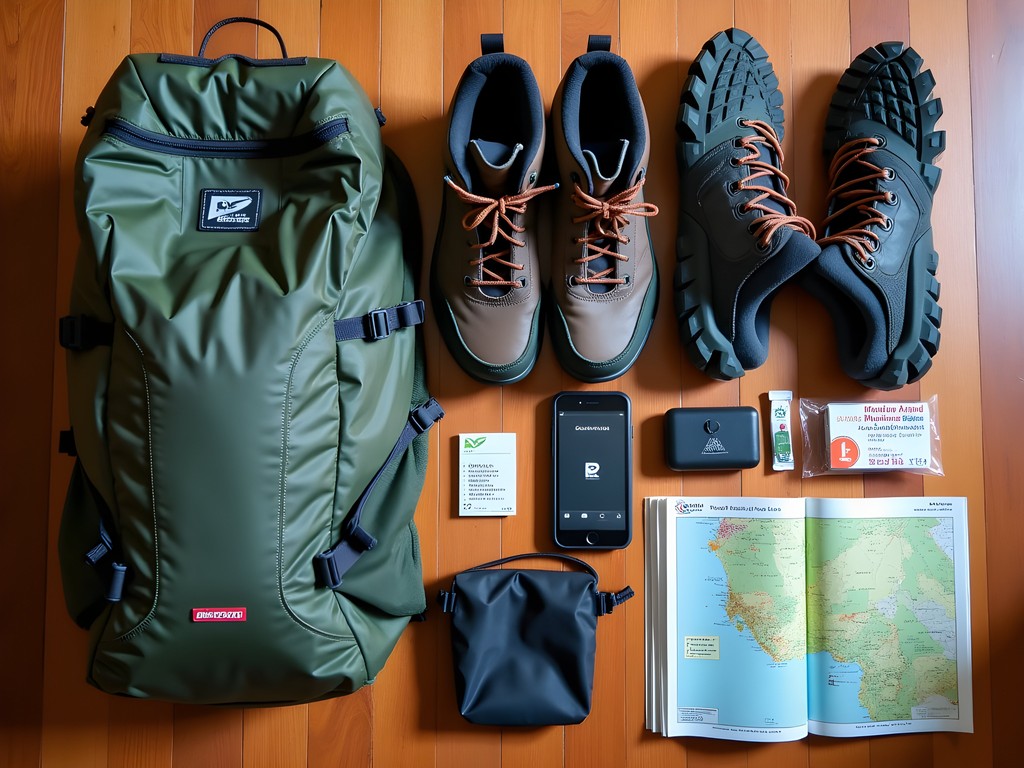
💡 Pro Tips
- Apply for forest permits at least 3 months before travel
- Pack twice as many ziplock bags as you think you'll need for electronics protection
- Learn basic Lingala and French phrases—locals appreciate the effort
Dolisie: Gateway to Green Adventures
Dolisie may not grace the pages of glossy travel magazines, but this modest city of approximately 80,000 residents serves as the perfect launching point for Mayombe Forest adventures. After the lengthy journey—flying into Brazzaville, followed by an overnight train ride that reminded me of my childhood travels through rural Quebec—I arrived with a mixture of exhaustion and anticipation.
I based myself at Hotel Les Bougainvilliers, a mid-range establishment where what it lacked in luxury, it made up for in character and locally-sourced meals. The proprietor, Madame Josephine, became my first cultural guide, marking up my maps with locations known only to locals and connecting me with Gilbert, a former forest ranger who would become my trusted guide.
Before plunging into the wilderness, I spent two days acclimating in Dolisie. The city's vibrant market became my classroom for understanding local life. Vendors selling everything from medicinal forest plants to hand-carved wooden masks provided glimpses into the region's rich cultural tapestry. I purchased a traditional woven bag that would accompany me throughout my journey, its craftsmanship reminiscent of the artisanal works I've documented across continents.
Dolisie's elevation provides spectacular vantage points for drone photography. At dawn, I captured the mist rising from the forest canopy, creating ethereal images that contrasted sharply with the bustling energy of the city's morning routines. These early flights also helped me map potential hiking routes while identifying landmarks that would guide our forest expedition.
Don't miss sampling palm wine at Chez Marcel, where locals gather each evening. This slightly fermented beverage—served in humble surroundings with abundant laughter—offered my first taste of Congolese hospitality. C'est un vrai délice! As I sipped and conversed in my rusty French, I discovered that genuine connections require no perfect translation.

💡 Pro Tips
- Arrange accommodation in Dolisie at least one week before the overnight train arrives
- Visit the market early (6-8am) for the freshest provisions for your trek
- Register your presence with local authorities upon arrival for safety
Into the Mayombe: Trails Less Traveled
The Mayombe Forest doesn't reveal its secrets easily. Unlike the well-marked trails of North America or Europe, paths here are ephemeral—appearing and disappearing with the seasons. This is why Gilbert, my guide, proved invaluable. His knowledge wasn't mapped on any GPS but etched into his memory through generations of forest wisdom.
Our expedition began with a 4x4 journey to the village of Mvouti, where we met our porters—local men whose strength and endurance humbled me daily. From there, we entered the forest proper, where the canopy closed above us like a living cathedral. The temperature dropped immediately, and the symphony of insects, birds, and primates enveloped us in nature's orchestra.
The primary trail network follows ancient trade routes that once connected forest communities. These paths vary dramatically in difficulty—from relatively flat sections near villages to challenging ascents that had me questioning my fitness despite decades of hiking experience. The most rewarding routes included:
The Kouilou River Trail: A moderate 12km path following the river's meandering course, offering glimpses of forest elephants and buffalo at dawn. We camped near a series of gentle rapids where I captured long-exposure photographs that still transport me back to the forest's rhythmic pulse.
Mount Bamba Circuit: For advanced hikers only, this challenging 18km loop ascends through changing vegetation zones to viewpoints that showcase the forest's vastness. The trail becomes treacherously slippery after rain, requiring trekking poles and considerable caution.
Dimonika Biosphere Trail: A scientifically significant route through protected areas where researchers study the forest's biodiversity. Here, Gilbert pointed out plants used in traditional medicine, including some being studied for potential pharmaceutical applications.
My trekking poles proved essential on these routes—providing stability on muddy inclines and helping distribute weight when crossing countless small streams. When selecting poles for similar terrain, adjustable models with cork grips (which perform well in humidity) and carbide tips for traction are worth the investment.
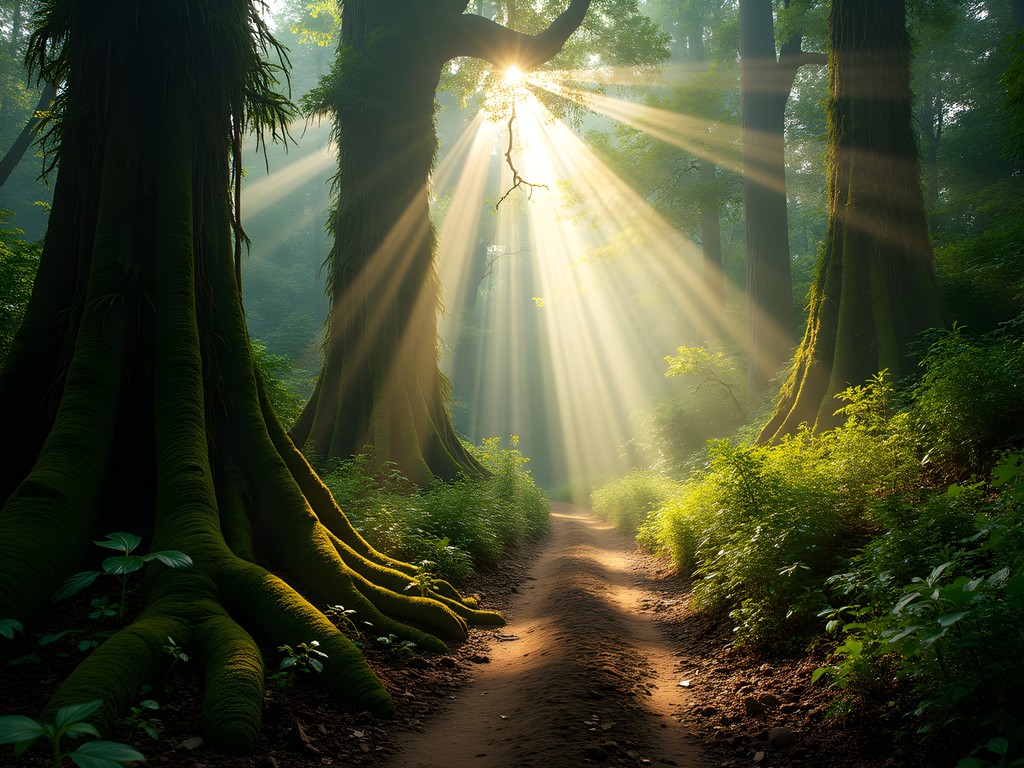
💡 Pro Tips
- Always hire a local guide—the forest is unmarked and potentially dangerous for solo travelers
- Pack a physical compass as backup—GPS signals are unreliable under dense canopy
- Move slowly and quietly for the best wildlife viewing opportunities, especially in early morning
Wildlife Encounters in the Green Heart
The Mayombe Forest may not boast the concentrated wildlife populations of East African savannas, but its biodiversity rewards the patient observer. As an educator accustomed to explaining complex concepts to young minds, I found myself reverting to childlike wonder at each encounter in this ecosystem.
Dawn provided our most memorable wildlife experiences. Rising at 4:30 AM, we would silently position ourselves near forest clearings where Gilbert knew animals gathered. My binoculars proved indispensable—their light-gathering capability and wide field of view perfect for spotting movement in the dim forest light. For photographers, I recommend selecting binoculars with ED (extra-low dispersion) glass that enhances clarity in challenging light conditions.
Our patience was rewarded with sightings of forest elephants—smaller and more elusive than their savanna cousins—moving like shadows between trees. Forest buffalo appeared briefly at water sources, while various monkey species, including the endangered mandrill, provided constant entertainment in the canopy above.
Birdlife proved particularly abundant, with hornbills, turacos, and the spectacular great blue turaco adding flashes of color to the green backdrop. My drone photography skills were tested as I attempted to capture the forest's scale while respecting wildlife and obtaining proper permissions. The resulting footage revealed patterns invisible from ground level—elephant pathways creating a network through seemingly impenetrable vegetation.
The most profound encounter came unexpectedly during our fifth day. As we rested near a small stream, a family of lowland gorillas emerged downstream. Following strict protocols (maintaining distance, avoiding direct eye contact), we observed them for twenty precious minutes. The silverback's occasional glances in our direction—curious but unthreatening—created a connection across species that words fail to describe. Quel moment sacré! These critically endangered primates face numerous threats, making such encounters increasingly rare privileges.
Night walks revealed a different dimension of forest life—from tree hyraxes to bushbabies and the occasional civet. A good headlamp with red-light capability is essential, allowing observation without disrupting nocturnal creatures' behavior.
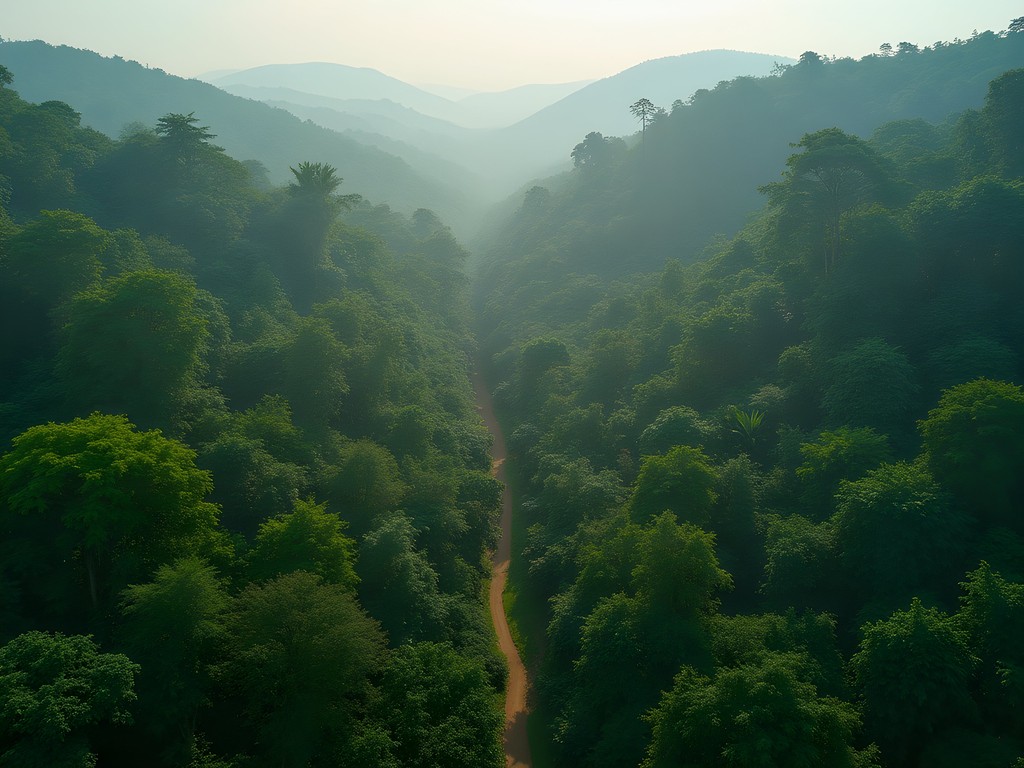
💡 Pro Tips
- Invest in a quality camera with high ISO capabilities for low-light forest photography
- Learn to identify primate calls before your trip—they often reveal locations before visual confirmation
- Respect wildlife by maintaining minimum distances and following guide instructions precisely
Cultural Connections: Forest Communities
The Mayombe Forest isn't merely wilderness—it's home to communities whose relationship with the environment offers profound lessons in sustainability. As someone who has documented cultural preservation across continents, I approached these encounters with respectful curiosity.
Our trek included overnight stays in three forest villages, each providing unique perspectives on life within this ecosystem. In Makaba, a settlement of approximately 30 families, we were welcomed with palm wine and traditional dance. The village chief, upon learning of my background in education, arranged for me to spend time at their small school. The resourcefulness of teachers working without electricity or modern supplies reminded me why I became an educator—genuine learning transcends material limitations.
These communities maintain traditional knowledge of forest resources that scientists are only beginning to document. In Loubomo village, I observed women processing nkala nuts—a nutritious forest food with potential economic value beyond local markets. Their processing techniques, refined over generations, demonstrate sophisticated understanding of forest biochemistry.
Most humbling was witnessing sustainable hunting practices in Mbamba village. Hunters showed me trapping techniques designed to harvest specific species without depleting populations—a stark contrast to commercial bushmeat operations threatening wildlife elsewhere. These traditional practices, when maintained within cultural contexts, represent sophisticated resource management systems.
Communicating across language barriers presented challenges, but my French provided common ground with many villagers. I carried a small instant printer to share drone and portrait photographs with communities—creating meaningful exchanges as families saw their homes and forest from perspectives previously unavailable to them. This small technological bridge generated hours of animated conversation and strengthened connections despite our different backgrounds.
Each village visit included demonstrations of traditional crafts—from basket weaving to instrument making. In Loubomo, I purchased a hand-carved ngombi (traditional harp) from its maker, who demonstrated its haunting melodies as sunset painted the forest gold. Such artifacts aren't merely souvenirs but tangible connections to cultures adapting to rapid change while maintaining their essential relationship with the forest.

💡 Pro Tips
- Bring small, practical gifts for village hosts—school supplies, basic medicines (with permission), or solar-powered lights are appreciated
- Always ask permission before photographing people or cultural practices
- Learn basic greetings in local languages—Kituba and Lingala phrases open many doors
Conservation Challenges and Responsible Trekking
The Mayombe Forest stands at a critical crossroads. This biodiversity treasure faces mounting pressures from logging, mining, and agricultural expansion. As travelers privileged to experience such environments, we carry responsibility to minimize our impact while supporting conservation efforts.
Throughout my two weeks in the region, I witnessed both destruction and hope. Near Dolisie, vast areas of forest have been cleared for palm oil plantations—a stark contrast to the intact ecosystems we trekked through. Yet organizations like the Mayombe Forest Transboundary Initiative are working across national borders (Congo, Angola, DRC) to establish protected corridors for wildlife movement.
Our trekking practices reflected conservation principles. We carried all non-biodegradable waste out of the forest, used water purification rather than plastic bottles, and followed established trails to minimize vegetation damage. My guide Gilbert emphasized these practices weren't merely for foreign visitors but represented traditional forest values—take only what's needed, disturb as little as possible.
Particularly moving was our visit to a community-based conservation project near Dimonika, where former poachers now work as eco-guards and guides. Their intimate knowledge of forest systems, combined with sustainable income from ecotourism, creates powerful incentives for protection. Supporting such initiatives directly connects visitor dollars with conservation outcomes.
For photographers and drone operators, ethical considerations are paramount. I obtained proper permits, respected no-fly zones, maintained distance from wildlife, and always sought permission before filming people or cultural activities. My portable solar charger eliminated the need for disposable batteries—a small but meaningful reduction in environmental impact during our trek.
Most encouraging was witnessing young Congolese environmentalists using technology to document and protect their natural heritage. In Dolisie, I met university students mapping forest resources with simple GPS units and open-source software—combining traditional knowledge with modern tools for conservation. Their passion reminded me that preservation of these ecosystems ultimately depends on local stewardship supported by global awareness.
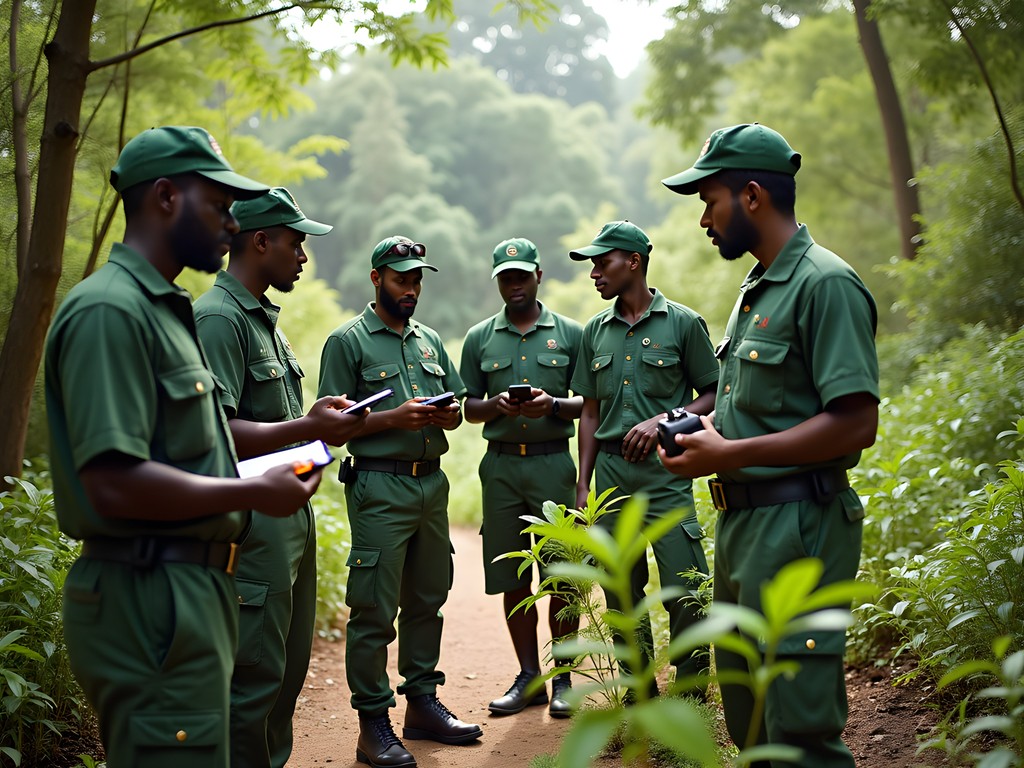
💡 Pro Tips
- Research tour operators thoroughly—choose those with verifiable conservation credentials
- Pack biodegradable soap and toiletries specifically designed for wilderness use
- Consider carbon offsetting your travel through verified forest protection projects
Final Thoughts
As my final drone flight captured the sunset over the Mayombe canopy, I reflected on how this forest had transformed me. Two weeks of trekking through Congo's green heart offered more than adventure—it provided profound lessons in resilience, both ecological and human. The communities maintaining ancient relationships with the forest, the dedicated conservationists working against overwhelming odds, and the enduring wilderness itself all embody hope in an age of environmental uncertainty.
The Mayombe doesn't yield its treasures easily. It demands physical endurance, cultural sensitivity, and patience. Yet for those willing to trek respectfully through its green cathedral, the rewards transcend mere tourism. C'est un voyage qui change l'âme—it's a journey that changes the soul. If you venture here, come with humility and depart as an advocate for this remarkable ecosystem. The future of the Mayombe depends on those who have witnessed its wonder becoming voices for its preservation. When will you answer the call of Congo's green heart?
✨ Key Takeaways
- The Mayombe Forest offers unparalleled biodiversity experiences for adventurous travelers willing to prepare properly
- Local guides and community connections transform a physical trek into a profound cultural exchange
- Supporting community-based conservation initiatives directly contributes to forest preservation
📋 Practical Information
Best Time to Visit
September-November (early dry season)
Budget Estimate
$2,500-3,500 for two weeks (excluding international flights)
Recommended Duration
Minimum 10 days, ideally 14-16 days
Difficulty Level
Challenging


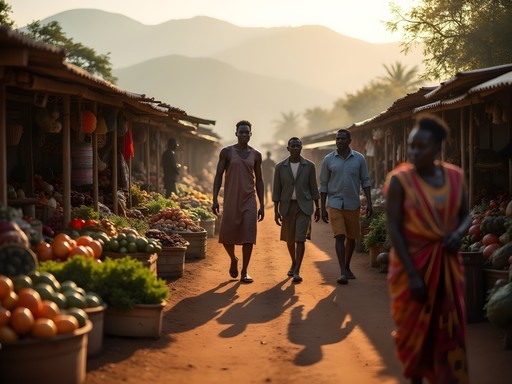
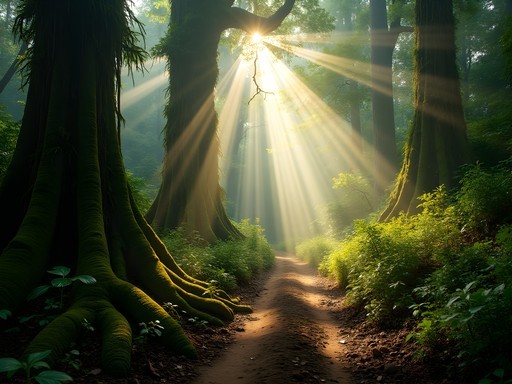


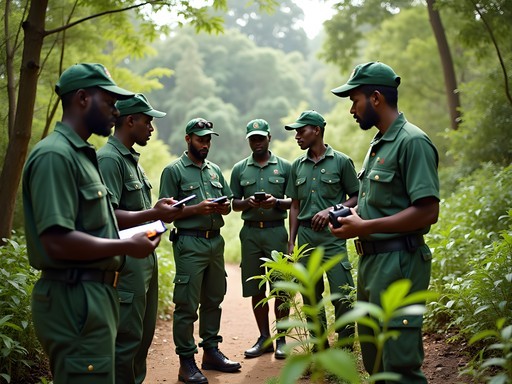


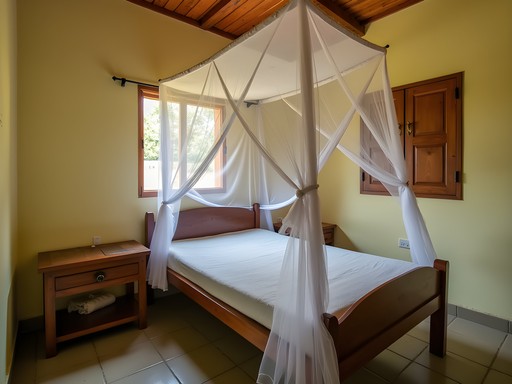

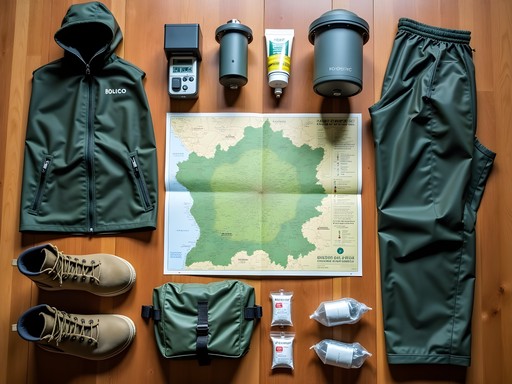
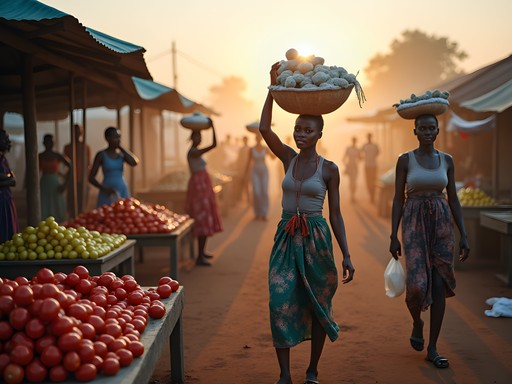




Comments
adventureperson530
Just booked my trip to Congo for next month! Your section on preparing for the humidity was super helpful. Can't wait to see those forest elephants!
Stella Rose
That's fantastic! Don't forget to bring binoculars - the elephants are often spotted at the forest edges near water sources in the early morning. Enjoy your adventure!
Jean Wells
Having traversed the Mayombe Forest three times over the past decade, I can attest that Stella's account captures its essence perfectly. However, I would add some practical considerations for solo travelers: 1. The cellular connectivity has improved dramatically since 2023, but still download offline maps. 2. The local transportation from Pointe-Noire to Dolisie has become more reliable, though I still recommend arranging private transport if your budget allows. 3. The biodiversity monitoring stations welcome visitors if arranged in advance - worth contacting them for a scientific perspective. One notable change: the eastern trails have been rerouted due to conservation efforts. The new paths actually offer superior viewpoints of the valley systems. The ecological recovery in this region represents a rare conservation success story in Central Africa.
luckyguide
Those wildlife shots are incredible! What camera settings did you use?
Stella Rose
Thank you! I used my telephoto lens with fast shutter speeds (1/1000+) for most wildlife shots. The early morning light in the forest was magical!
happyguide3707
This looks incredible but I'm a total beginner with hiking. Is the Mayombe Forest doable for someone with limited experience? Are there easier trails you'd recommend starting with?
Stella Rose
Absolutely! There are trails for all levels in the Mayombe. I'd recommend starting with the guided day hikes from Dolisie - they range from 2-4 hours and are relatively flat. The local guides are excellent at adjusting the pace for beginners!
happyguide3707
That's so good to hear! Thanks for the encouragement!
Savannah Torres
Stella, your adventures in the Mayombe Forest brought back so many memories! I took my family there last summer, and my kids still talk about how they felt like real explorers. The local guide we hired in Dolisie was incredible with the children, teaching them about medicinal plants and animal tracking. One tip for families considering this trek: bring plenty of lightweight, quick-dry clothing. The humidity is no joke, and with kids, you'll want fresh changes. Also, the night sounds of the forest became our favorite bedtime soundtrack - we recorded some on our phones to play back home when the kids miss our adventure!
adventureperson530
Did you feel safe traveling there with kids? I've heard mixed things about Congo but this forest looks amazing.
Savannah Torres
We absolutely felt safe! The key is arranging guides in advance through reputable companies. The locals in Dolisie were incredibly welcoming to our children. Just stick to recommended areas and listen to local advice.
dreamrider
Wow! Those drone shots of the Mayombe canopy are absolutely breathtaking! Adding this to my bucket list right now.
John Hart
Excellent documentation of one of Central Africa's less-visited treasures, Stella. Having spent three decades exploring Congo's forests, I can attest that the Mayombe represents a unique ecosystem that's increasingly threatened. Your observations on the secondary growth patterns align with my research findings from 2018-2020. The local conservation initiatives you mentioned are critical - particularly the community-based monitoring programs that employ former hunters as guides. One correction though: what you identified as a bongo antelope tracks were likely sitatunga, as bongos aren't typically found this far west. For anyone planning similar treks, I recommend waterproof everything - I've never experienced humidity quite like Mayombe's microclimate. Fascinating account overall.
Stella Rose
Thank you for the correction, John! You're absolutely right - I should have consulted with more experts on the track identification. Your decades of experience in the region are invaluable. I'd love to hear more about those community monitoring programs as they seemed to be making a real difference.
starvibes
I trekked the Mayombe last year and it was life-changing! Your description of the morning mist is spot on. Did you stay with any local families? That was the highlight for me - learning about traditional forest medicine from village elders and trying manioc prepared the traditional way. The biodiversity is incredible too - we spotted 27 bird species in just one day!
dreamfan
What kind of camera gear did you use for those wildlife shots? The detail is amazing!
Stella Rose
I used a Sony A7III with a 100-400mm lens for most wildlife shots. For the drone footage, I brought my compact drone which was perfect for forest conditions - light enough to carry on treks but powerful enough for those canopy shots!
winterway
OMG these photos are INCREDIBLE!!! The Mayombe Forest just jumped to the top of my bucket list! That misty canopy view is absolutely dreamy. Can't wait to experience this myself someday!!! 😍🌳🌿
Venture X
Premium card with 2X miles, $300 travel credit, Priority Pass